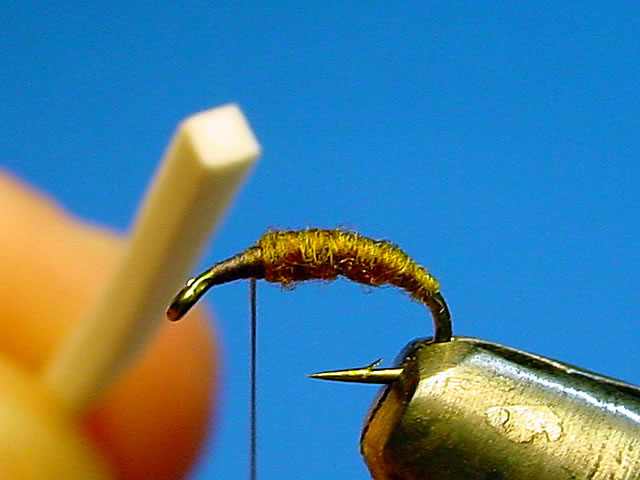The Parachute Emerger is a variation of the fantastic Barr Emerger. The addition of the parachute hackle and foam post adds floatation and visibility to a pattern that mimics an emerging nymph to a T.
There are a couple tricks to tying this fly and you may have noticed I’ve eliminated the shuck from the original pattern. There is no need for a shuck on this fly because when you think about it, the fly imitates a floating nymph and the shuck would imitate the empty nymphal husk. How can the nymph be floating with the shuck hanging off the back? The shuck only makes sense on a crippled dun pattern, so…no shuck. The foam post adds a few advantages to tying the parachute hackle in that it doesn’t need to be posted with thread previous to wrapping the hackle feather. The foam will compress and grip the hackle stem facilitating real ease in wrapping the hackle feather.
You can change this pattern to imitate different bugs by altering the color of the thorax dubbing to match other insects, yellow for a PMD, tan for a Red Quill etc…
When fishing this fly apply floatant only to the post and hackle and allow the body to become saturated and sink below the surface.
Materials Needed:
Hook: TMC 2487 #16-24
Thread: Gray 8/0 or 14/0
Abdomen: Olive Brown Superfine Dubbing
Parachute Post: 2mm white foam
Hackle: Blue Dun Rooster Neck
Thorax: Gray Beaver Dubbing
Step 1
Attach the thread and wrap back to the bend of the hook.

Step 2
Apply a thin layer of Superfine dubbing to the thread and build a tapered abdomen from the bend to the seventy percent point.

Step 3
Cut a strip of flat 2mm foam so it is approximately 2mm square.

Step 4
Tie the foam in at the front edge of the abdomen and wrap over it to slightly overlap onto the abdomen.

Step 5
Select and prepare a blue dun hackle feather and tie it in at the base of the foam post.

Step 6
Apply a thin layer of gray beaver dubbing to the thread and begin to dub the thorax from the rear edge of the index point back to the base of the wing post.

Step 7
Make a single turn of dubbing behind the foam post to help prop it upright and then continue forward again to the index point.

Step 8
Grasp the hackle tip in a pair of rotating hackle pliers and wrap the feather clockwise around the post starting with the top turn and making each successive turn under the last. Make about three to five turns.

Step 9
Grasp the wrapped portion of the hackle in your fingertips and hold it out of the way while you tie off the tip of the hackle feather.

Step 10
Whip finish the thread at the index point and clip the thread.

Step 11
Cut the foam post into a short nub. Don’t make it too short, as the hackle could slip off and leaving it a little long makes the fly much more visible on the water.

